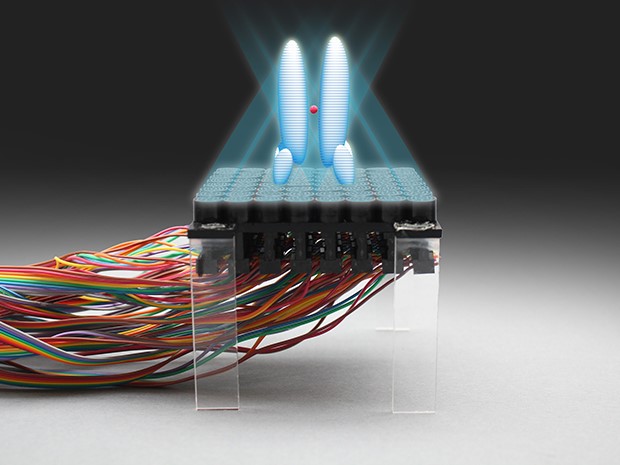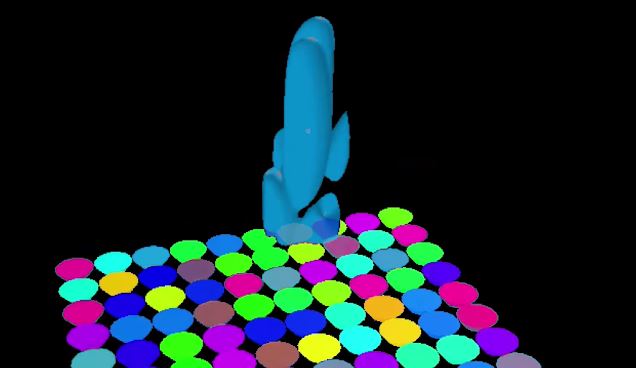
What better way to start the day than by learning that yet another chunk of technology long envisioned by science fiction is on route to becoming science fact. Remember the tractor beam, that strange column of energy responsible for everything from “abducting” crazies in New Mexico to seizing discarded caches of illegal space goods? Scientists from Public University of Navarre in Spain have successfully manipulated tiny objects midair using what they refer to as acoustic holograms.
Wait a minute, using acoustic holograms? As most may recall, holograms are three dimensional structures made from light — more specifically, by photons diffracting through an interference pattern on a holographic plate. Apparently, sound waves can also generate 3D structures by constructively and destructively interfering with ultrasonic waves, allowing them to exert force on objects and behave like tractor beams.
This recent technique is a step forward from previous acoustic levitation techniques which suspended particles within the standing wave of ultrasound created between a pair of ultrasound emitter arrays, or a single array aimed at a reflector. Varying the wave’s phase causes the nodes to move, transporting the particles along a single axis. Great and all, but fundamentally limited as the design relies on a fixed enclosure. Now, the same can be accomplished with a single acoustic emitter and no special enclosure or thanks to acoustic holographs.

These “acoustic holograms” are 3D structures made of sound that are shaped in the form of tweezers, twisters, or bottles, and essentially bridge the gap between optical and acoustical trapping. As such, they’re produced by a single 20 by 20 ultrasonic phased array of 10 millimeter transducers that generates 40 kilohertz ultrasonic sound waves using programmable relative phase modulations.
Each transducer features two elements: a holographic lens that’s created when the emitted sound waves overlap in phase at the focal point of the structure, and an element that determines the shape of the ensuing structure. Combing the transducer array’s sound wave with the holographic lens while rapidly oscillating will suspend small particles of up to 3 mm in diameter midair and granting control over their orientation and position.
So, what’s so interesting about single-beam levitation? Other than that it’s never been done before, the technique could unlock new methods of manipulating particles within our bodies as a form of targeted drug delivery or even acoustically control nanomachines.
The findings can be found in greater detail in latest issue of the journal Nature Communications .
Source: IEEE Spectrum
Advertisement
Learn more about Electronic Products Magazine





